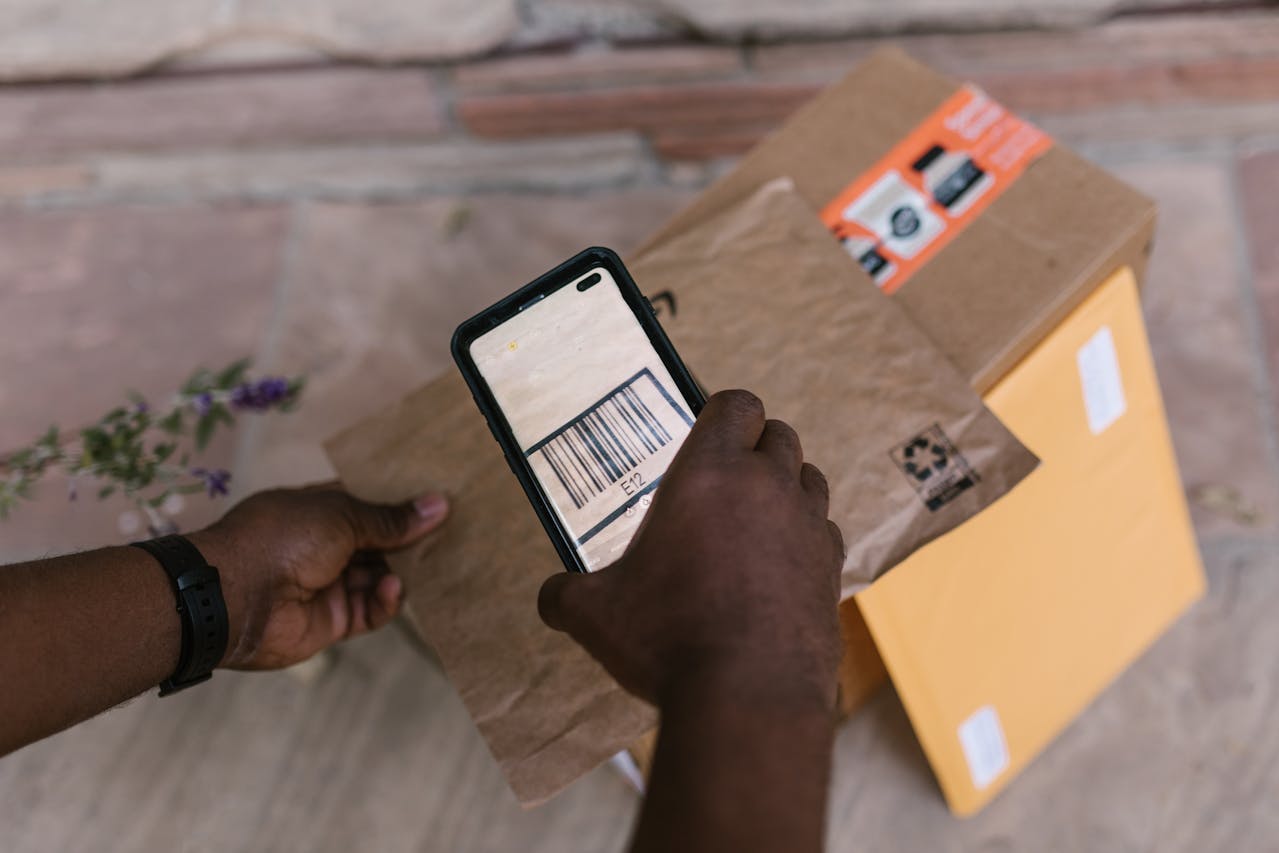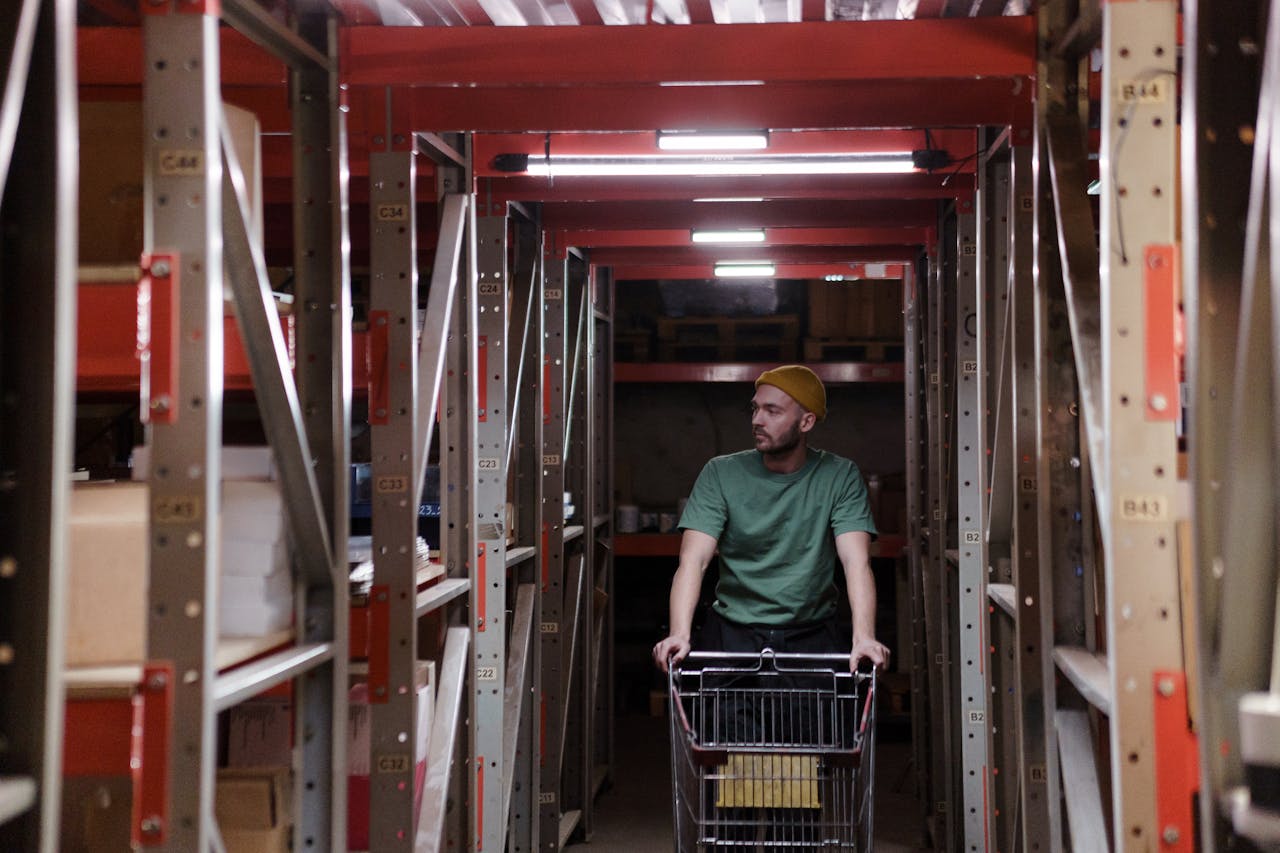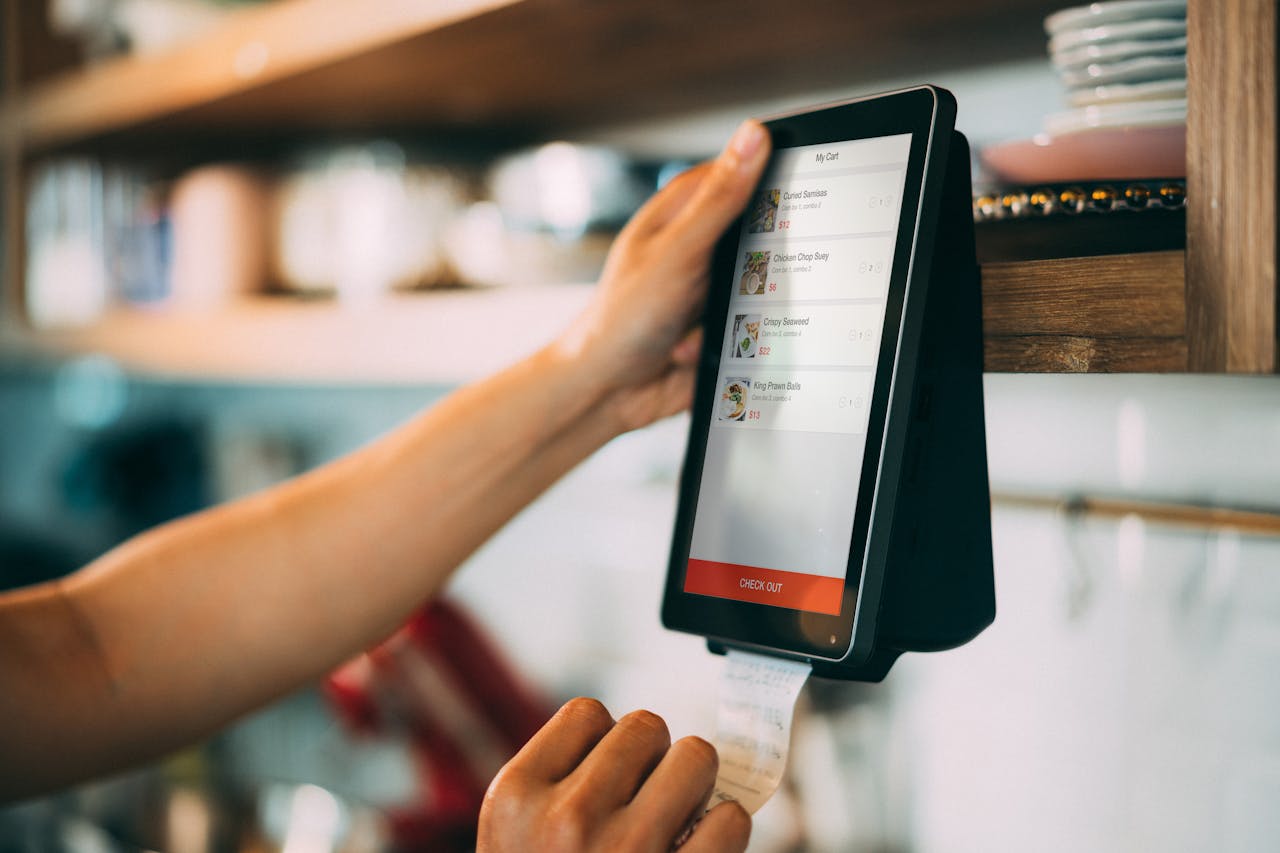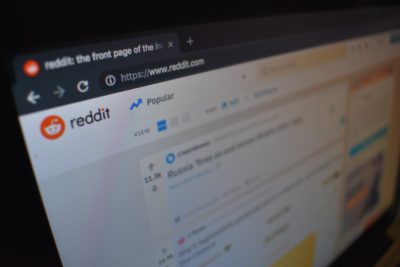Discover proven Shopify fulfillment strategies that scale with your business. Learn how to streamline operations, reduce order errors, and improve delivery speed with the right tools, partners, and performance optimization — all tailored for growth.
Key Takeaways
→ Manual fulfillment breaks down fast — scaling requires automation, strategy, and strong 3PL partnerships.
→ Smart inventory distribution and real-time analytics are critical for reducing shipping delays and costs.
→ Storefront speed impacts the whole fulfillment experience — tools like Hyperspeed keep your ops and UX aligned.
The Hidden Growth Bottleneck
Ever notice how some Shopify stores seem to grow effortlessly while others hit a wall? I’ve seen it countless times – the difference often isn’t marketing or products, but what happens after customers click “buy now.”

Shopify Fulfillment – The Hidden Growth Bottleneck
Operational efficiency is the secret sauce that separates thriving Shopify businesses from the ones treading water. When your store hits 50, 100, or 500 orders a day, those manual processes that worked fine at the start become serious bottlenecks.
The fulfillment iceberg is massive – shipping is just the tip. Below the surface lurks inventory management, order processing, and supply chain challenges that can sink your business if ignored.
Faster delivery, fewer errors, and consistent stock levels directly impact what customers think about your brand. A solid fulfillment strategy doesn’t just save money – it drives growth.
Understanding the Shopify Fulfillment Landscape for Merchants
Before diving into specific solutions, let’s get clear on what we’re actually talking about when we discuss fulfillment for Shopify stores.
What is Ecommerce Fulfillment?
Ecommerce fulfillment is everything that happens between a customer placing an order and receiving their package. It’s the backbone of your business – the process that turns digital transactions into real-world customer satisfaction.
For Shopify store owners, fulfillment is where promises meet reality. You can have the prettiest store and best products, but if orders arrive late, damaged, or incorrect, customers won’t come back.
The difference between digital fulfillment (processing orders in your systems) and physical inventory management (handling actual products) is crucial. Many store owners excel at one but stumble with the other. Success requires mastering both.
The Core Stages of the Order Fulfillment Process
The order Shopify fulfillment process breaks down into distinct stages, each presenting opportunities for optimization:
Inventory receiving and storage is where it all begins. This includes accepting shipments from suppliers, quality checks, logging items into your system, and organizing warehouse space. A messy receiving process creates problems downstream.
Order processing and packing turns digital orders into physical packages. This includes picking items from shelves, packing them safely, adding packing slips, and preparing shipping labels. Speed matters here, but accuracy matters more.
Shipping and returns is your final touchpoint with customers. This includes carrier selection, tracking, delivery confirmation, and handling returns. Smart merchants know that a smooth return process often leads to repeat purchases.
Partial fulfillment becomes important as you grow – the ability to ship available items immediately rather than waiting for everything to be in stock. Customers appreciate getting most of their order quickly, with clear communication about the rest.
Many Shopify store owners struggle with expedited shipping options. Should you offer them? Can you reliably fulfill them? The answer depends on your fulfillment setup.
Choosing the Right Shopify Fulfillment Model for Scale
As your store grows, your Shopify fulfillment approach needs to evolve. Let’s explore which model works best at different stages.

Shopify Fulfillment – Choosing the Right Shopify Fulfillment Model
Self-Fulfillment vs. Outsourced: Pros and Cons
Manual Fulfillment – doing it all yourself – offers complete control and zero fulfillment partner fees. It makes sense when you’re just starting or sell items that need special handling.
But let’s be real about the downsides:
- Your time is valuable (and limited)
- Scaling means hiring staff
- Warehouse space gets expensive
- You become the bottleneck during busy periods
A candle shop owner I worked with was spending 5 hours daily on packing orders. By outsourcing fulfillment, she redirected that time to product development and doubled her revenue in six months.
Third-Party Fulfillment makes sense when:
- Order volume becomes unpredictable
- Seasonal spikes overwhelm your team
- You need to focus on growth, not operations
- International shipping becomes important
For example, a fitness equipment brand struggled with holiday rushes until they partnered with a fulfillment provider. Their processing times dropped from 4 days to same-day, and customer satisfaction scores jumped 40%.
Dropshipping and Its Limits
Dropshipping looks attractive – no inventory, no packing, just marketing and sales. But is it sustainable?
While it’s a fast way to test products with minimal investment, you sacrifice control over quality, shipping times, and customer experience. I’ve seen successful dropshippers, but almost all eventually move to holding inventory for their bestselling products.
Dropshipping works best as a testing strategy or supplement, not as your only Fulfillment Strategy for long-term growth.
When to Transition to Outsourced Fulfillment
How do you know when it’s time to stop fulfilling orders yourself? Watch for these warning signs:
- Your Order Processing Time exceeds 24 hours
- You’re regularly working nights and weekends just to keep up
- Shipping errors are increasing
- You’re missing opportunities because fulfillment consumes all your time
- Seasonal volume spikes cause major backlogs
A home goods seller I advised waited too long to outsource. When a viral TikTok brought 2,000 orders in three days, they couldn’t keep up. The resulting customer service nightmare cost them more than what fulfillment services would have.
Evaluating Shopify Fulfillment Solutions
Not all fulfillment providers are created equal. When shopping for Shopify fulfillment solutions, prioritize:
- Integration depth with Shopify (look for native apps, not just APIs)
- Transparent pricing with no hidden fees
- Locations that match your customer base
- Technology that gives you visibility into operations
- Expertise with products similar to yours
Fulfillment cost optimization isn’t just about finding the lowest per-order price. Consider the total impact on your business, including time saved and customer satisfaction gained.
Successful logistics partnerships feel like extensions of your team, not just vendors. The right partner grows with you and adapts to your changing needs.
Tools and Platforms to Enhance Shopify Fulfillment Operations
Now let’s look at specific solutions that can transform your fulfillment operations.

Shopify Fulfillment – Tools and Platforms to Enhance Fulfillment Operations
The Shopify Fulfillment Network (SFN): A Deep Dive
The Shopify Fulfillment Network (SFN) is Shopify’s answer to Amazon’s fulfillment services. It’s designed specifically for Shopify merchants who want simplified operations without losing brand control.
SFN works by distributing your inventory across geographically dispersed warehouses, allowing for faster delivery to customers nationwide. When orders come in, they’re routed to the optimal fulfillment center.
Key features include:
- Shop Promise badging on your store, showing customers reliable delivery dates
- Free customizable packaging that maintains your brand identity
- Simple integration directly in your Shopify admin
SFN is best for merchants shipping 10-10,000 orders monthly with products that aren’t extremely heavy, hazardous, or requiring special handling.
A furniture accessories brand I worked with saw delivery times cut in half after joining SFN, plus a 15% increase in conversion rate after adding Shop Promise badges.
However, SFN isn’t perfect – some merchants find the pricing less competitive for very high volume, and international shipping options aren’t as robust as some alternatives.
Alternative Solutions: Third-Party Fulfillment Options
While SFN works well for many, these alternatives might better fit your specific needs:
ShipBob specializes in D2C brands with strong software integration and analytics. Their 2-day delivery network covers 95% of the US, but their minimums can be tough for smaller merchants.
ShipHero offers both software and fulfillment services with excellent batch picking technology. Their warehouse network isn’t as extensive as others, but their technology is top-notch.
Amazon FBA provides unmatched delivery speeds and integrates with Shopify, but comes with strict requirements and less branding control. It’s great for marketplace sellers but less ideal as your only fulfillment solution.
Your choice should balance inventory distribution capabilities, technology, pricing model, and minimum requirements.
Integrating Shopify Fulfillment Services
Setting up your Shopify store for seamless fulfillment requires attention to:
- App connections for real-time inventory updates
- Order routing rules (which orders go where)
- Return processing workflows
- Custom fields for special handling instructions
The right order fulfillment software eliminates manual data entry and reduces errors. Look for solutions offering real-time analytics so you can monitor performance without logging into multiple systems.
Demand forecasting capabilities become crucial as you scale – the ability to predict inventory needs before stockouts occur.
Advanced systems can analyze seasonal patterns and growth trends to recommend optimal stock levels.
Fast fulfillment means nothing if your site takes forever to load. Check out the Ultimate Ecommerce Site Speed Guide to make sure your storefront isn’t the bottleneck in your customer experience.
Optimizing Inventory and Warehouse Operations
Even with great fulfillment partners, smart inventory practices are essential for growth.

Shopify Fulfillment – Optimizing Inventory and Warehouse Operations
Inventory Management for Scale
Simplified Inventory Management isn’t just a fancy term – it’s about removing unnecessary complexity from your stock control.
Practical steps include:
- Standardizing SKU naming conventions
- Setting par levels for reordering
- Implementing barcode scanning (even for small operations)
- Consolidating similar products
- Regular cycle counting rather than disruptive full inventories
Real-time stock tracking across all sales channels prevents overselling. When your Shopify store, Amazon listing, and wholesale portal all draw from the same inventory pool, you need systems that update instantly.
Common physical inventory management mistakes include:
- Poor warehouse organization (items stored randomly)
- Failing to label receiving dates (leading to aged inventory)
- No designated areas for returns processing
- Mixing similar-looking products without clear identifiers
Inventory Distribution for Faster Fulfillment
Strategic Inventory Distribution across Geographically Dispersed Warehouses can dramatically cut shipping costs and delivery times.
By analyzing customer locations, you can place inventory closer to demand. This enables more affordable Expedited Shipping options since items travel shorter distances.
Effective Demand Forecasting prevents both stockouts and overstocking. This involves:
- Analyzing historical sales data
- Adjusting for seasonality
- Planning for promotions
- Building safety stock for bestsellers
- Identifying slow-moving items for potential discounting
Fulfillment Analytics provides insights into where inefficiencies occur. Track metrics like:
- Time from order to shipment
- Picking accuracy rates
- Inventory turnover by location
- Shipping costs as percentage of order value
Want to measure how your fulfillment strategy is actually performing? Learn how to use Shopify Analytics to track what matters — like shipping times, inventory turnover, and customer satisfaction—so you can optimize with real data, not gut feelings.
Shopify Fulfillment Automation and Efficiency Gains
As order volume increases, automation becomes essential rather than optional.

Shopify Fulfillment Automation and Efficiency Gains
Leveraging Automation Tools
Automated fulfillment starts with eliminating manual data transfer. Tools like Shopify Flow can trigger actions based on order conditions – routing high-value packages to signature service or flagging international orders for customs documentation.
Examples of automation in action:
- Automatic generation of packing slips and shipping labels
- Inventory threshold alerts before stockouts occur
- Customer communication at key fulfillment stages
- Priority flagging for VIP customers or expedited orders
Analytics and Optimization
Real-time analytics transform fulfillment from reactive to proactive. Rather than discovering problems after customer complaints, you can identify bottlenecks before they impact customers.
Key fulfillment KPIs to track:
- Order accuracy rate (aim for 99%+)
- Order cycle time (from click to ship)
- Perfect order percentage (orders delivered complete, accurate, and on-time)
- Returns rate by reason code
- Cost per order
Don’t Let a Slow Storefront Undo Your Operational Gains
Even perfect fulfillment can’t overcome a poor shopping experience. Backend efficiency must be matched by frontend performance.
- Rank higher on Google with faster load times
- Deliver a seamless shopping experience
- Boost your sales with optimized performance 🚀
How Hyperspeed Optimizes Performance to Match Backend Efficiency
Hyperspeed is a Shopify-specific performance optimization app built to solve exactly this problem. It works behind the scenes to dramatically improve load times, streamline code, and reduce friction across the entire shopping journey.
Here’s how Hyperspeed helps:
Image Compression and Lazy Loading
Hyperspeed automatically compresses large image files and uses lazy loading so only what’s needed loads first. This means faster product pages and lower bounce rates, especially important for mobile shoppers.
Minification of Code (CSS, JS, HTML)
It strips away unnecessary code bloat — removing whitespace, comments, and redundant scripts — resulting in a leaner, faster-loading store.
Advanced Caching Strategies
Hyperspeed ensures that returning customers get blazing fast load times through intelligent caching, which reduces server load and improves overall site responsiveness.
JavaScript Deferral and Async Loading
Scripts are deferred and loaded asynchronously, which means the visible parts of your site load first — delivering that crucial first impression speed that keeps users engaged.
Critical CSS Injection
Hyperspeed injects just the styles needed to render the above-the-fold content quickly, so your site looks fast and feels fast, even before the rest finishes loading.
When your storefront is slow, even the best fulfillment strategy falls flat — because people abandon their carts before orders even exist. Hyperspeed ensures that your performance on the front end is just as optimized as your backend operations, creating a seamless path from click to doorstep.
Effective supply chain optimization requires end-to-end thinking. Your fulfillment strategy should consider the entire journey from supplier to customer doorstep.
Shopify Fulfillment: Scaling Smart, Not Just Fast
Growing your Shopify store sustainably means building operations that can handle 10x your current volume without breaking. This requires intentional choices about your fulfillment strategy.

Shopify Fulfillment – Scaling Smart, Not Just Fast
The most successful merchants balance speed, efficiency, and customer experience. They recognize that:
- Faster isn’t always better if accuracy suffers
- Cheapest isn’t best if it damages customer trust
- Most automated isn’t optimal if it removes necessary flexibility
When evaluating ecommerce fulfillment solutions, ask yourself:
“Will this still work when I’m twice my current size? Five times? Ten times?”
The path to sustainable growth on Shopify isn’t about working harder – it’s about building systems that scale without requiring your constant attention. With the right fulfillment approach, your operations can become a competitive advantage rather than a growth constraint.
What’s your next step? Start by mapping your current fulfillment process. Identify the biggest bottlenecks, then tackle them one by one. Small improvements compound into major efficiency gains over time.
How fast is your Shopify store?
Compare how fast your store is to a huge sample of other stores. Get benchmarked and find out where you can improve your speed to make more sales.
FAQ
What is the most effective Shopify fulfillment strategy for scaling businesses?
The best Fulfillment Strategy combines Third-Party Fulfillment with Automated Fulfillment tools to reduce Order Processing Time, improve Customer Satisfaction, and support Supply Chain Optimization across Geographically Dispersed Warehouses.
How does the Shopify Fulfillment Network (SFN) help scale operations?
Shopify Fulfillment Network distributes inventory across Geographically Dispersed Warehouses, enabling faster shipping, Expedited Shipping, and Shop Promise delivery badges—all while simplifying Digital Fulfillment and Inventory Management.
When should I switch from manual fulfillment to third-party fulfillment?
Transition when Order Processing Time regularly exceeds 24 hours, errors increase, or seasonal spikes overwhelm staff. Third-Party Fulfillment streamlines operations and supports consistent Customer Satisfaction at scale.
How can I reduce fulfillment costs while scaling my Shopify store?
Fulfillment Cost Optimization involves choosing the right Ecommerce Fulfillment Solutions, automating workflows, and leveraging data from Fulfillment Analytics to lower shipping fees, avoid stockouts, and reduce manual labor waste.
What role does inventory distribution play in Shopify fulfillment?
Inventory Distribution ensures products are stored closer to customers using Geographically Dispersed Warehouses. This reduces shipping costs and Order Processing Time, while improving Expedited Shipping availability and Customer Satisfaction.
How can I improve accuracy in the order fulfillment process?
Use Order Fulfillment Software and barcode scanning for picking accuracy. Implement Real-Time Analytics and regular audits for better Inventory Management, reducing errors in the Order Fulfillment Process and improving Customer Satisfaction.
What’s the benefit of using Fulfillment Analytics in Shopify operations?
Fulfillment Analytics helps track metrics like Order Processing Time, perfect order rate, and inventory turnover. These insights support Supply Chain Optimization and help merchants make informed decisions for scaling efficiently.
How does Demand Forecasting help Shopify stores scale?
Demand Forecasting analyzes sales trends to predict future inventory needs. It enables Simplified Inventory Management, reduces stockouts, and ensures the Order Fulfillment Process runs smoothly even during high-demand periods.
What’s the difference between Digital Fulfillment and Physical Inventory Management?
Digital Fulfillment handles online order data and system processes, while Physical Inventory Management involves storing, picking, and shipping real products. Scaling requires mastery of both for a seamless Order Fulfillment Process.
Should my Shopify store offer partial fulfillment for out-of-stock items?
Yes, Partial Fulfillment allows in-stock items to ship immediately while backordered products follow. It improves Customer Satisfaction, shortens perceived Order Processing Time, and keeps the fulfillment experience proactive and flexible.



